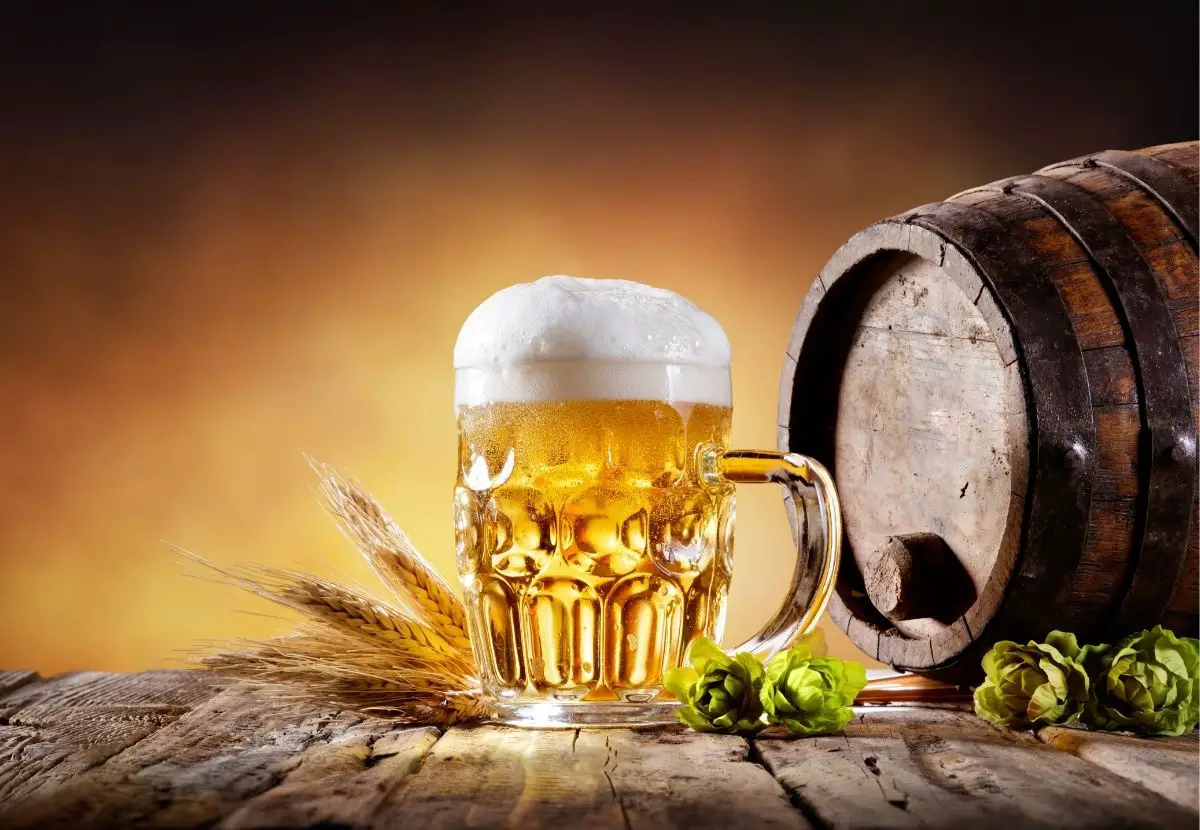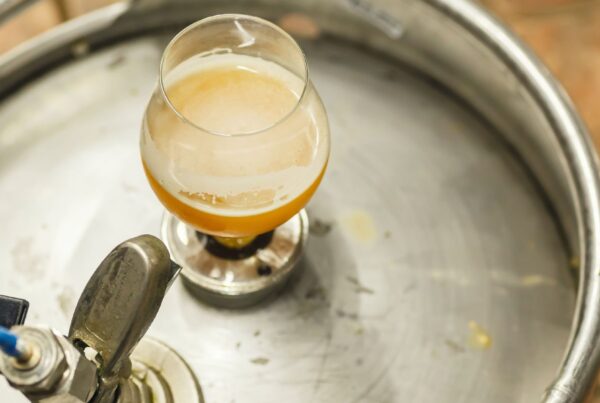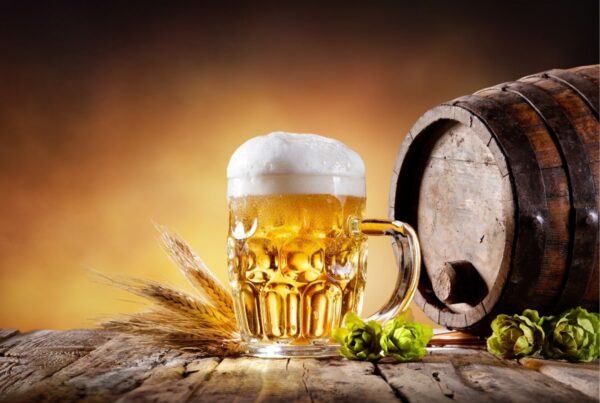What Is Wheat Beer & What Makes it Different?
Got a handle on hops? Sipped every stout? Think you’ve tasted the entire beer spectrum, from ales to zwickels?
Well, hold onto your pint glass (and make some room in your beer fridge).
In the world of beers, wheat beers are rising to the top—and they’re doing it without leaning too heavily on good ol’ barley.
Intrigued? Confused? Perfect.
Let’s dive deeper, bust a few myths, and clear the haze surrounding one of the haziest styles of beer in the world today.
What is Wheat Beer?
For the uninitiated, wheat beer offers a refreshing alternative in the vast selection of brews available. As the name suggests, its distinctiveness arises from its primary ingredient: wheat.
Unlike most beers that rely on malted barley, wheat beer includes a significant proportion* of wheat, lending it a unique flavor profile and mouthfeel (texture).
*Proportion is the operative word here—we’ll get into that a bit later.
While wheat beers have a broad spectrum, they’re notably different from other varieties available from your local breweries, bars, or beer gardens. Their distinctive character comes not just from malted barley but also from the generous addition of wheat.
Fun Fact: While many mistakenly think wheat beer to be a quintessentially American beer style, its roots are actually German.
Is Wheat Beer Made from Wheat or Barley?
Wheat beer, as the name would imply, prominently features wheat in its formulation. This gives the beer certain characteristics not found in beers brewed solely with malted barley.
However, it’s important to note that this doesn’t mean wheat beer is made exclusively from wheat. Most wheat beers are a blend of both wheat and barley malt.
Composition Breakdown:
- Wheat: Typically, a wheat beer might contain between 30% to 70% wheat malt. The exact percentage can vary based on the specific type of wheat beer, and the brewing tradition/region it hails from. The presence of wheat gives the beer a light, crisp taste and can contribute to the beer’s signature hazy appearance.
- Barley: Even in wheat beers, barley malt plays a significant role. Barley is traditionally the backbone of most beers, including wheat beers. It lends depth to the flavor, adds fermentable sugars, and contributes to the beer’s body and mouthfeel.
Different types of wheat beers, such as Hefeweizen (one of the most popular beer styles from Germany) or Witbier (a Belgian-style beer), will have variations in their exact wheat-to-barley ratio and might include additional ingredients like spices or fruit peel.
Brewing Process for Wheat Beers
The distinctiveness of wheat beer isn’t solely due to its grain composition, it also owes its unique characteristics to its brewing process.
The proportion of barley to wheat plays a significant role in determining the beer’s flavor profiles. American Wheat Beers (i.e. Boulevard Wheat by Kansas City’s Boulevard Brewing Company) generally lean toward 30-50% wheat, while German Hefeweizens can often be more wheat-forward, with up to 70% wheat content.
One of the most notable visual differences in many wheat beer varieties, including hefeweizen, is their generally “cloudy” appearance, which actually results from post-fermentation yeast residue.
Speaking of which—while wheat naturally plays a central role in “wheat beer,” another key factor that shapes wheat beer’s flavor, aroma, and overall character is the yeast used to brew them.
If you make your own beer at home, or are otherwise interested in learning more about the relationship between yeast and wheat in creating these brews, stick around—we’re about to get granular. Or if that kind of deep dive sounds about as fun as watching hops grow, feel free to skip to the next section.
Yeast Strains in Wheat Beers
Craft brewers understand the importance of both malted barley and raw wheat in producing different tasting wheat beers—but they can also achieve different flavors and aromas by using different yeast strains during fermentation.
Some prominent wheat beer yeast strains include:
- Wyeast’s American Wheat 1010 – Known for its neutral fermentation, this strain doesn’t overpower the beer’s inherent flavors, allowing for a clean and clear taste profile.
- Lallemand Munich Classic Ale Yeast – A versatile choice for wheat beer brewers, this strain enhances the beer with a smooth mouthfeel and introduces subtle citrus undertones.
Some ale yeasts, preferred for wheat beers, can introduce fruity or spicy notes. For instance, the signature “banana and clove” flavor profile of a hefeweizen comes from a specific German ale yeast strain that synergizes well with the combination of malted barley and raw wheat. This strain is known as Saccharomyces cerevisiae var. Diastaticus.
Fortunately, within the brewing community and among commercial yeast suppliers, it is typically referred to by more user-friendly names:
- Wyeast 3068 Weihenstephan Weizen – Originating from the Weihenstephan Institute in Germany, this strain is famous for producing classic Bavarian-style wheat beers with prominent banana and clove notes.
- Fermentis Safbrew WB-06 – Another popular commercial option for brewing wheat beers, though the flavor profile can be a bit different from the Wyeast variant.
- White Labs WLP300 Hefeweizen Ale Yeast – Comparable to the Wyeast 3068, this strain is also known to produce beers with a strong fruity ester profile, particularly the characteristic banana flavor.
The flavor characteristics from these yeast strains are influenced by fermentation temperature. For instance, higher fermentation temperatures tend to produce more banana esters, while lower temperatures emphasize the clove phenols.
Myth Busting: Does Wheat Beer Cause Yeast Infections?
This is a common myth in the beer world. While yeast is a key ingredient in beer, there is no scientific evidence to suggest that drinking wheat beer, or any other kinds of beer for that matter, directly causes yeast infections.
The yeast used in beer brewing, typically Saccharomyces cerevisiae or its variants, is simply different from the yeast Candida albicans, which is responsible for most yeast infections in humans. Of course, you should always consult with a healthcare professional about concerns regarding yeast infections and potential causes.
Final Thoughts
In the beer universe, wheat beer isn’t playing around—it’s dominating its lane. With a blend of traditional brewing ingredients and techniques, accentuated by the presence of wheat, it’s carved out its own hazy niche on the shelves of your local liquor store. The careful selection of specific yeast strains further distinguishes the taste, resulting in a diverse range of flavors within the category.
Thirsty for more beer intel? Check out Hops Hunters for in-depth beer profiles and reviews of the best beers from around the country—and around the world.






